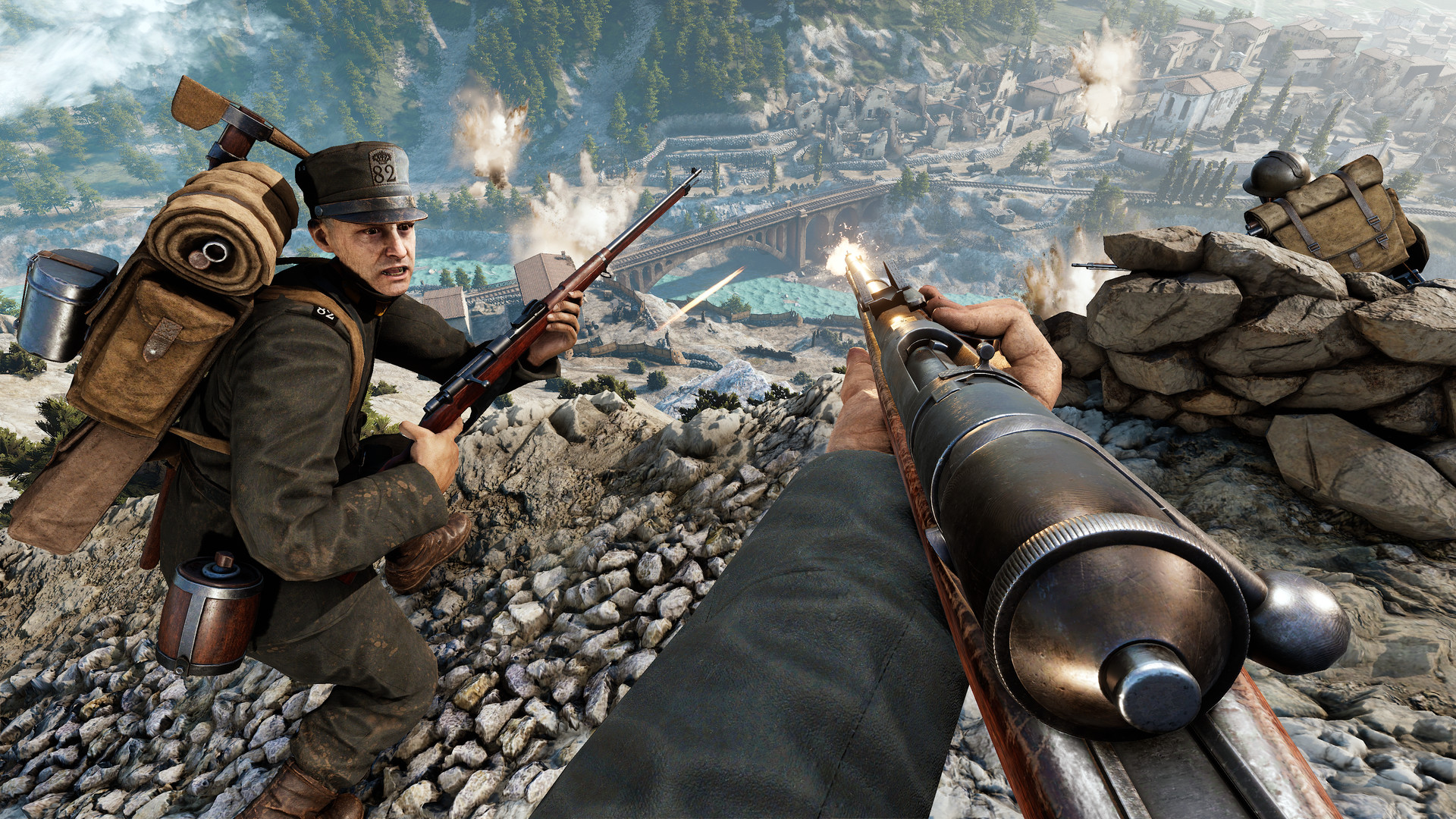

With great attack they then occupied Plužna village above Bovec. The second division won the slope of Mt Rombon, despite strong resistance. The first division attacked the Church of the Virgin Mary in the Field, where the Italians had their machine gun positions. Just a few hours later infantry fights between Mt Rombon and Mt Krn began. All the Italian soldiers were focused on the slope of Mt Rombonon and no one paid attention to what was going on in the valley.

In a blink of an eye more than 500 Italian soldiers took their last breath.Īttack was a complete surprise. The deadly cloud of gas has started to spread towards Čezsoča where Italian troops had their caverns. Gas grenades were being fired from 894 tubes, previously installed in the Bovec field. At 2 o’clock in the morning Austrian artillery began a sudden attack. Night on the 24th October 1917 was cold and foggy. The cable cars as well as the road over mountain pass Vršič played an important role in these preparations. And, all this mass of people and material had to be moved from the nearby train stations over the mountains to the Soča valley, just in front of the Italian artillery and aviation. They need 2,400 trains to transport soldiers, ammunition, guns, equipment and food from hinterland to the front. It was important to keep the operation a secret. But now Austrians and Germans were about to turn this tactic upside down and attack the enemy from the valley, where they were the most vulnerable.ĭetailed and careful preparations for counteroffensive began. Together with Germans they drew up a daring plan to carry out a big attack from the valleys of Bovec and Tolmin in the direction of Kobarid.īy the old military mindset you had to control the mountains if you wanted to control the land. So, the military headquarters in Vienna realized that the situation could only be resolved by fierce attack on the Italian positions.īut, Austrians needed help. It significantly lowered the morale of troops on the Isonzo front. Long-term position war was actually a war of weakening. In the meantime the threat of another Italian offensive attack also hanged in the air. Finally, the public opinion also turned against the war. The hinterland was facing a lack of food and labor because all the healthy men were in the army. The surviving men were exhausted, hungry and wanted to return home. So in the second half of 1917, the Austrians realized that they will not be able to withstand the increasingly critical situation on the Soča battlefield for much longer.īy the time the Austria has lost more than 5 million soldiers on all the battlefields. Austria Hungary has already been in the war for three years on three different fronts. Then the Emperor Franz Joseph died in November 1916. The purpose of these attacks was to penetrate into the heart of the Empire and eliminate the Austro Hungary from the war. Italian troops needed to win the settlement on Ravelnik in the Bovec field, as well as peaks in the high mountains. All this time fierce clashes were being held in the Upper Soča valley too. In the first eleven offensives Italians were trying to take over different Austrian positions in Tolmin, Gorizia and the Carso plateau. Italy was promised what it wanted and therefore entered the war on the side of France, Great Britain and Russia by signing the Treaty of London.ġ2 battles were fought in the next 2 years. On the other hand, the countries of the Entente were more generous.

Trieste was part of the Habsburg Empire for over 500 years and Austria was not willing to give up its most important port. Austria and Emperor Franz Joseph were willing to give up some lands, but not the town of Trieste. Italy was never hiding its appetites for certain territories that were part of the Austro Hungarian Empire. Italy was aware of its importance to both sides and wanted to profit as much as possible out of a situation. In the background tricky diplomatic game was going on. Great Britain entered the war on the side of the Entente and Italy avoided the war by declaring neutrality. Also, they all believed that the combat will be over by Christmas.īut on New Year’s morning in 1915, the situation was far from being resolved. It speculated that Great Britain will not join the war and that Italy will join the war on Austria and Germany’s side. Germany desperately wanted a war, but it was playing a dangerous game.


 0 kommentar(er)
0 kommentar(er)
